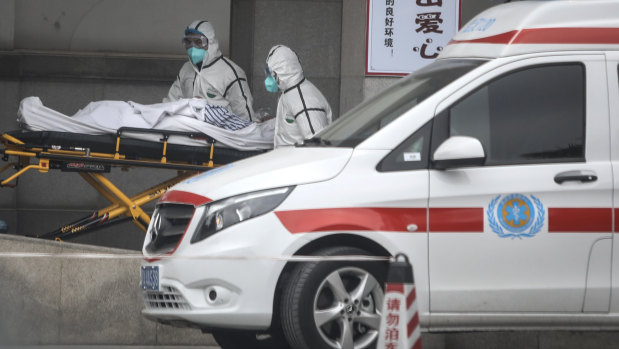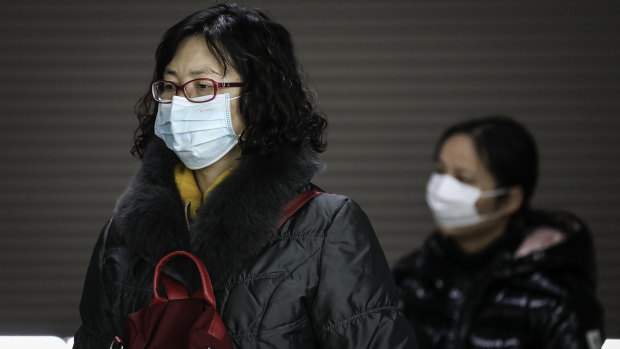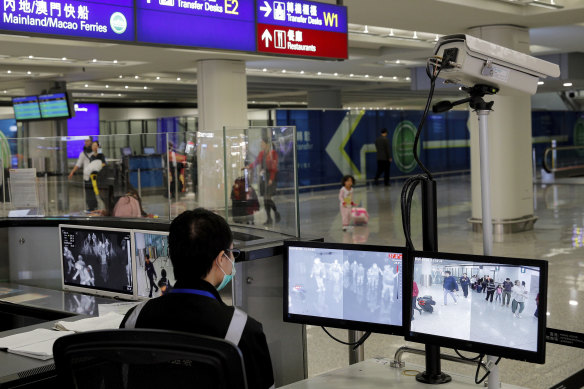This was published 5 years ago
Australian health officials in talks over new coronavirus, as number of cases triple
By Rachel Clun
Australia's chief medical officer is examining the country's response to the outbreak of a new coronavirus as the number of cases of pneumonia linked to the new virus has tripled.
Chinese health authorities confirmed another 139 cases of the virus which first broke out in the central Chinese city of Wuhan had been detected on the weekend, and a third person has died.
South Korea also confirmed its first case of the virus in a Chinese woman who flew from Wuhan to Incheon airport on Sunday. Three cases were earlier reported in Thailand and Japan.
The new coronavirus has also spread to more Chinese cities, with two cases reported in the capital Beijing and one in Shenzen.
Chief medical officer Brendan Murphy said that while Australia was continuing to monitor the situation closely, there was "still no cause for alarm".
"Australia has well-established mechanisms to detect and respond to ill travellers, and processes in place to add to these if risk increases," Professor Murphy said.
There are three direct flights per week between Wuhan and Sydney.

Medical staff transfer patients to hospital in Wuhan.Credit: Getty Images
So far, Australia has not increased screening measures at airports. However, at least half a dozen countries in Asia have begun screening programs, and the US Centres for Disease Control and Prevention (CDC) has started screening passengers arriving from Wuhan at three airports.
Early cases of the virus, known as 2019-nCoV, were first linked to a seafood market in Wuhan, which has since been closed down.
However, the World Health Organisation and other health authorities have now noted there is evidence of limited human-to-human transmission of the disease. In Wuhan alone, there have been 198 cases of 2019-nCoV, with 136 of those detected over the weekend.

The number of confirmed cases of the new coronavirus has jumped sharply, with the number of cases in Wuhan alone now at 198.Credit: Getty Images
Meanwhile, the head of a Chinese government expert team, Zhong Nanshan, a respiratory expert, confirmed two people in Guangdong province in southern China caught the virus from family members, state media said. Some medical workers have also tested positive for the virus, the English-language China Daily newspaper said.
Associate Professor Adam Kamradt-Scott, from the Centre for International Security Studies at the University of Sydney, said while authorities were "operating in the dark to a certain degree", there was no evidence of "widespread human-to-human transmission".
"Otherwise we'd be seeing a large number of cases, far beyond what we've currently got."
Professor Murphy said he met with his state and territory counterparts in the Australian Health Protection Principal Committee to discuss Australia's response to the new virus on Monday afternoon.
"The department is also actively discussing the matter with the Department of Agriculture, which manages Australia’s biosecurity at the border, including human health, and the Department of Foreign Affairs and Trade, which manages travel advice through Smartraveller," he said.
Chinese authorities said the outbreak was "still preventable and controllable" and added it would increase monitoring over the Lunar New Year period that starts this week, to reassure the public as hundreds of millions of people prepare to travel before the country's biggest annual holiday.

A health surveillance officer monitors passengers arriving at the Hong Kong International airport.Credit: AP
The novel coronavirus is notable because of similarities with the one that sparked Severe Acute Respiratory Syndrome, or SARS, 17 years ago.
"The source of the new type of coronavirus has not been found, we do not fully understand how the virus is transmitted, and changes in the virus still need to be closely monitored," China's National Health Commission said on Sunday.
Coronaviruses are a large family of viruses, some causing illness in people, and others that circulate among animals, including camels, cats and bats, the CDC said. Animal coronaviruses rarely evolve and infect people and then spread between people.
With AAP, AP, Bloomberg
Clarification: Since first publishing, some health workers have been diagnosed with the new coronavirus